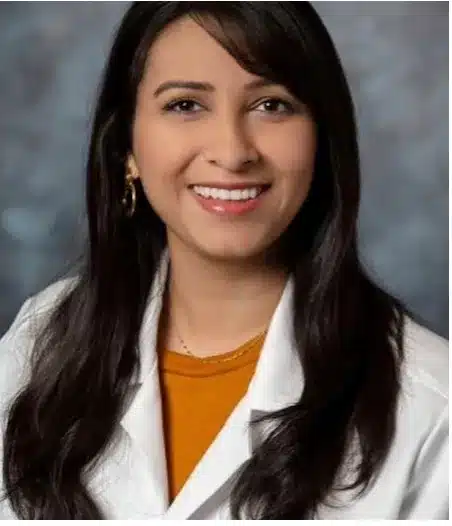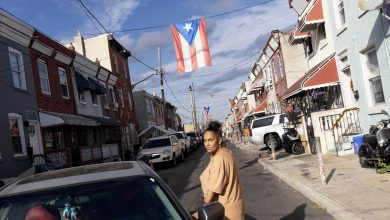Baby Formula Crisis: Between Parents and the Oligopoly
An impressive group of medical experts recently presented – at a press conference organized by Ethnic Media Services for reporters and editors of ethnic media – the latest information on masks, vaccines and what awaits us in the fight against COVID.
They answered questions such as whether the elimination of mask mandates in public transport makes already vulnerable populations more vulnerable. Regarding vaccines, they were questioned whether we need a new and better vaccine, given the large number of symptomatic infections in vaccinated and boosted people. Are “breakthrough infections” the new normal?
The participants were Dr. Eric Feigl-Ding, Co-Founder and Board Member of the Global Health Network, and Head of the COVID Task Force at the New England Institute for Complex Systems; Dr. Ben Neuman, professor of biology and chief virologist at the Global Health Research Complex, Texas A&M University; Dr. Manisha Newaskar, MD, Pediatric Pulmonologist, Stanford Children’s Health; and Dr. William Schaffner, MD, Professor of Preventive Medicine in the Department of Health Policy and Professor of Medicine in the Division of Infectious Diseases, Vanderbilt University School of Medicine.
The meeting was moderated by Sunita Sohrabji from EMS. The session was opened by Sandy Close, director of Ethnic Media Services.
Question: On April 28, Moderno announced that it had requested official authorization for the COVID vaccine intended for children under five years of age. You previously asked for approval for children ages 6 to 11 and 12 to 17. What can we expect from the use of the vaccine for younger children, when acceptance among adolescents has been low?

They have to make sure that vaccines are safe for everyone. I don’t have any inside information but I guess by the middle of June we will have the announcement.
As for how sure I am that people are going to get vaccinated, that’s another thing: we have to work as pediatricians to inform parents. Every day there are children who get sick and are hospitalized with COVID and can have complications.
We need to educate our young families and encourage them to get their children vaccinated. There is much to do, but I hope that with the correct information our families will vaccinate their young children.
Question: Are you afraid of the danger of myocarditis, as is the case with some older children?
Dr. Manisha Newaskar: I haven’t seen the data, but I understand that Moderna previously, for vaccines for children 5 to 12 and for adolescents, updated their information on myocarditis.
Question: Does the vaccine for children ages five and under work the same way as those ages 5 to 12? What is the decision-making process in approval?

Regarding the decision-making process, you have to have solid information about effectiveness and safety. Similar information already exists for older children. We think there will be fewer problems for younger guys. Both companies work hard to make sure the dosage is exactly right. They did a lot of studies on that and they have data from labs and from the field.
Vaccine safety is crucial; we are vaccinating healthy children who do not have COVID. And the vaccines are as safe as anything we give in pediatric practice.

Dr. Ben Neuman: Schools have a role to play in spreading the vaccine. Meningitis, which normally requires vaccination, causes 500 preventable deaths per year. On the other hand, COVID causes about 350 deaths in the same age group during the same period. It is approximately the same.
Question: Regarding the cancellation of the obligation to wear a mask during travel, including commercial flights, will you continue to wear the mask?

We are again having a behavior that should not surprise us, it is like saying that there is a fire but we can live with that magnitude of fire but we forget that viruses are not fire, viruses change and generally in a way that makes them more difficult .
Question: Are we increasing the vulnerability of the elderly and of those children who have not yet been vaccinated?
Dr. Eric Feigl-Ding: We are putting many children at risk. Last year when people said that Omicron is mild, the same study that had said it found that it is 20% more severe in children than in adults. We have really neglected our children.
Protecting children also means that adults get vaccinated and take precautions. But now we are throwing the precautions to the wind, with the lifting of the use of the mask and other measures.
Now, with the booster dose, we get them to give 90%-95% protection against death, but the protection against infection is only 40%-45%. And less in terms of asymptomatic contagion.
Now the adults get together, they have parties, much more than before they took precautions. This increases the risk of transmission. And who are the most vulnerable? Children.
So if there is a group of 10 adults, none of them are going to die, but if they have children or someone who is immunocompromised at home, they could suffer a severe outcome.
Additionally, 20% of the unvaccinated and 5% to 10% of the vaccinated get Long COVID. These are very high numbers.
Again, we are neglecting our children when we focus on the fact that hospitals are no longer full and that we are protected from hospitalization and death. We don’t tell kids to stop wearing bike helmets, or seat belts, or a driver who can drive and drink, because we have enough hospital beds. We dont’t.
But today, using the very stupid criterion that hospital beds are not full, this is what they say. That doesn’t help. We are responsible for risking our children.
Dr. Manisha Newaskar: Vaccination rates for children are very low. We don’t have vaccines for one-year-old babies… for five-year-olds we are waiting for authorization. My recommendation is to continue wearing a mask on public transport and in public places. Let’s continue to be cautious. This is not the time to let your guard down.
Dr. William Schaffner: Lawyers cannot be making these decisions. We have to protect the CDC’s authority to issue public health recommendations. Today and in the future.
Regarding the use of a mask in public transport, buses, trains, planes. I would give more weight to who you are, whether you are elderly, in frail health, have heart disease, lung disease or diabetes. Are you immunocompromised? Or are you caring for someone who falls into any of these categories?
If you fall into any of those categories, wear your mask even if those around you don’t.
Question: On April 19, Moderna announced a version of the vaccine that they say is better against the newer variant. Can you explain it?
Dr. William Schaffner: Every year we update the flu vaccine. Vaccine scientists are now doing something similar for the COVID vaccine. I know that manufacturers are working on a combination vaccine that is both influenza and COVID.
Dr. Eric Feigl-Ding: It is correct that in the future we will need new vaccines. The mutation process in the virus is very fast. The Omicron that was 90% of the cases five months ago has almost disappeared. The concept of responding “just in time” is very critical. We have to adapt with new vaccines, although we will always be two steps behind.
Question: We see so many already vaccinated people getting sick and what we used to call breakthrough infection seems to be the new normal. Is a new and different vaccine needed?
Dr. Ben Neuman: Yes, or at least improve what we have. But I don’t know if one day we will be able to get ahead of the virus. The virus can change in infinite ways. It is problematic that we are vaccinating against strains of the virus that have already been extinct for a year. The future is in the part of the Omicron and vaccinating against that is useful at the moment.
Dr. Manisha Newaskar: I see it from a different perspective. We know that current vaccines work well, preventing severe illness and hospitalization and deaths. With the variants that come, it is good to modify the vaccines and there are those who are doing it. But current vaccines do work, they are not obsolete. They are very efficient.
Question: should we see vaccinations only to prevent hospitalization and death or also to prevent symptomatic infection?
Dr. Manisha Newaskar: Ideally yes, but in practice I don’t know if any vaccine does. So I do consider the ability of the vaccine to prevent hospitalization.
Dr. William Shaffner: These vaccines are designed to prevent people from having to go to the hospital. Just yesterday I was on a call from the CDC, and they presented us with the data: hospitalizations and deaths are much more common among the unvaccinated than among those who were, even partially, vaccinated.
The truth is that vaccines continue to help and we have to get the unvaccinated to get vaccinated or to complete their doses including the booster.











